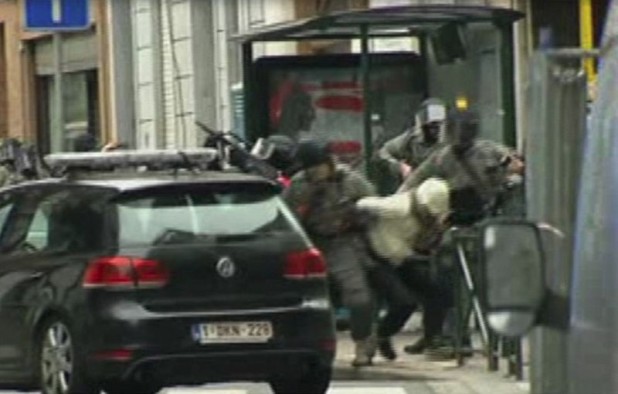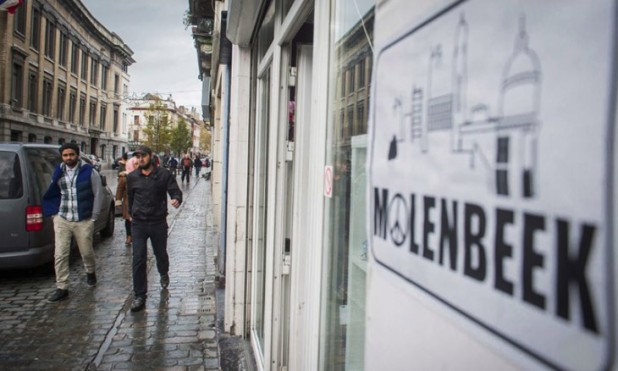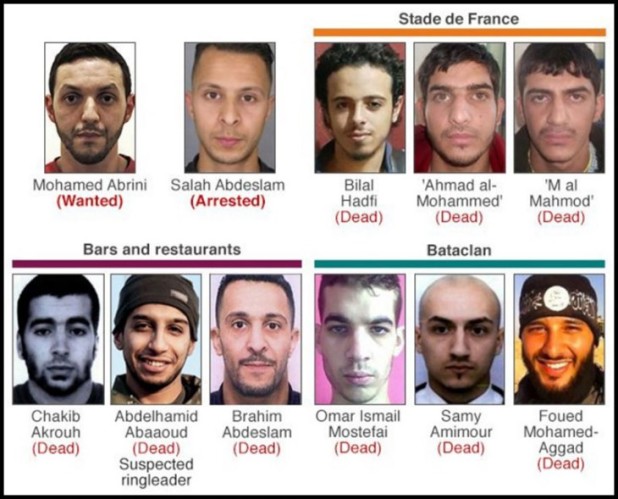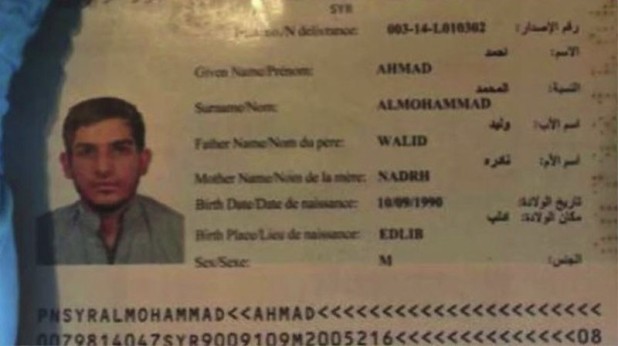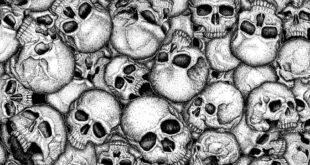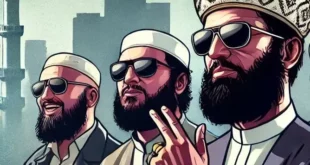The New Observer
March 19, 2016
The arrest of “immigrant” terrorist Salah Abdeslam in Brussels has once again highlighted the terror threat faced by Europe as a result of mass nonwhite legal and illegal immigration, and the ongoing “refugee” invasion.
All ten of the Paris terror attackers were either “immigrants” or “asylum seekers,” and at least three entered Europe as part of the Angela Merkel-invited wave of “refugees” last year.
At least six of the terrorists fought for ISIS in Syria, and the group’s ringleader, Abdelhamid Abaaoud had boasted to an ISIS magazine of how police failed to catch him as he moved several times between Belgium and Syria, with border guards failing to recognize him.
Abdeslam’s arrest—in the nonwhite-overrun suburb of Molenbeek, Brussels—followed a shootout earlier this week in another “multicultural” suburb, Forest, in which an Algerian illegal immigrant was shot dead.
One of Abdeslam’s fingerprints was found in the dead Algerian’s apartment, confirming that the Moroccan-origin terrorist had been in recent contact with him.
Clues recovered in this raid apparently led police to swoop on the Molenbeek apartment where Abdeslam was arrested. Abdeslam was the logistical chief of the November 13, 2015 Paris terror attacks in which 130 people were killed and 368 injured.
Abdeslam rented the cars used in the shootings, booked the hotel rooms, and physically dropped off the Stade de France suicide bombers.
Although born in France, Abdeslam’s family was Moroccan, and appeared to have legally immigrated to France in terms of that country’s pro-nonwhite immigration policies.
His brother, Brahim Abdeslam, died after he set off his explosives-laden suicide belt near a Paris cafe on Boulevard Voltaire.
Earlier in 2015, Brahim Abdeslam had travelled to Turkey, intending to go on to Syria, but Turkish authorities deported him back to Brussels.
The Paris terrorist attack was masterminded by Abdelhamid Abaaoud, another Moroccan “legal immigrant” to Belgium. He was killed in a police raid in Saint-Denis, northern Paris, a few days after the attack.
Although a French national, Abaaoud was on the terrorist watch list. To get around the problem of using his French passport to enter Europe again, he simply posed as a “refugee” and came by landing on the Greek islands and using the “Balkans route” to Austria, where he was once again free to travel without question to Belgium and finally to Paris.
Chakib Akrouh was another Paris terrorist who was born to a Moroccan family in Belgium, who had legally immigrated to Europe.
Akrouh blew himself up using a suicide vest during the police raid on the flat in Saint-Denis. He is thought to have been the third man involved in the bar and restaurant attacks that left 39 people dead as his DNA was found in the Seat car in which the three killers were driven.
He travelled to Syria in 2013 and was given a five-year jail sentence in absentia while he was there.
Omar Ismail Mostefai was born in France to an Algerian family who had legally immigrated to that country. He blew himself up after the massacre at the Bataclan, where 89 people were killed. He was well-known to police as a criminal, with eight prior convictions.
Mostefai fought for ISIS in Syria, and also appears to have spent time fighting with the Algerian branch of that organization. He entered Turkey from Syria in 2013, but there is no record of him leaving that country, revealing once again the total lack of border controls there as well.
Samy Amimour was another of the suicide bombers who blew himself up at the Bataclan. He was born in Drancy, Paris, to an Algerian family who had legally immigrated to France.
Amimour was known to French intelligence services, and had been charged with terror offences in 2012 over claims he had planned to go to Yemen.
He was placed under judicial supervision but then fled to Syria to fight for ISIS, but “somehow” came back into France undetected to help carry out the Paris attacks.
Foued Mohamed-Aggad was the third Bataclan bomber. A child of a Moroccan family who had legally immigrated to France, Mohamed-Aggad had fought in Syria for ISIS until he also “somehow” managed to return to France to take part in the Paris attacks.
‘Ahmad al-Mohammad’ was the name which was used by the nonwhite who was the first to blow himself up at Stade de France stadium. A Syrian passport with this name was found near his body, but this was one of the tens of thousands of fake “Syrian” passports used by the invaders on the “Balkans route,” and the terrorist has never been identified.
His fingerprints had however been taken at a “refugee reception center” on the Greek island of Lesbos on October 3, 2015. From there he had moved swiftly up to Austria, from where he had “vanished” and headed off to Brussels to meet with his comrades in preparation for the attack.
Bilal Hadfi was another of the nonwhite terrorists who died at the Stade de France when he detonated his suicide vest. He had tried to gain entrance to the stadium, but was denied entry and blew himself up in the nearby rue de la Cokerie.
Hadfi was born to a Moroccan family who had legally immigrated to Belgium, and had gone to fight for ISIS in Syria. He was also known to the intelligence services, but also “somehow” managed to re-enter Europe despite being on the watch list.
‘M al-Mahmod’ was the name used by the third suicide bomber at the Stade de France stadium, who blew himself up at one of the entrances.
Like ‘Ahmad al-Mohammad,’ this nonwhite used another fake “Syrian” passport and has also never been identified. He was however fingerprinted at the Lesbos “refugee reception center” on October 3, along with ‘Ahmad al-Mohammed.’ The two ISIS terrorists then purchased ferry tickets to the mainland and followed the “Balkans route” up into western Europe.
The arrest of Salah Abdeslam—and hundreds of other “immigrants” and “refugees” since then—has demonstrated beyond any question that mass Third World immigration poses not only serious social threats to Europe’s future existence, but immediate and dire security risks as well.
In this regard, it is important to understand that these risks come from both legal and illegal Third World immigration channels—and both need to be halted and reversed, if Europe is to survive.
 Daily Stormer The Most Censored Publication in History
Daily Stormer The Most Censored Publication in History
